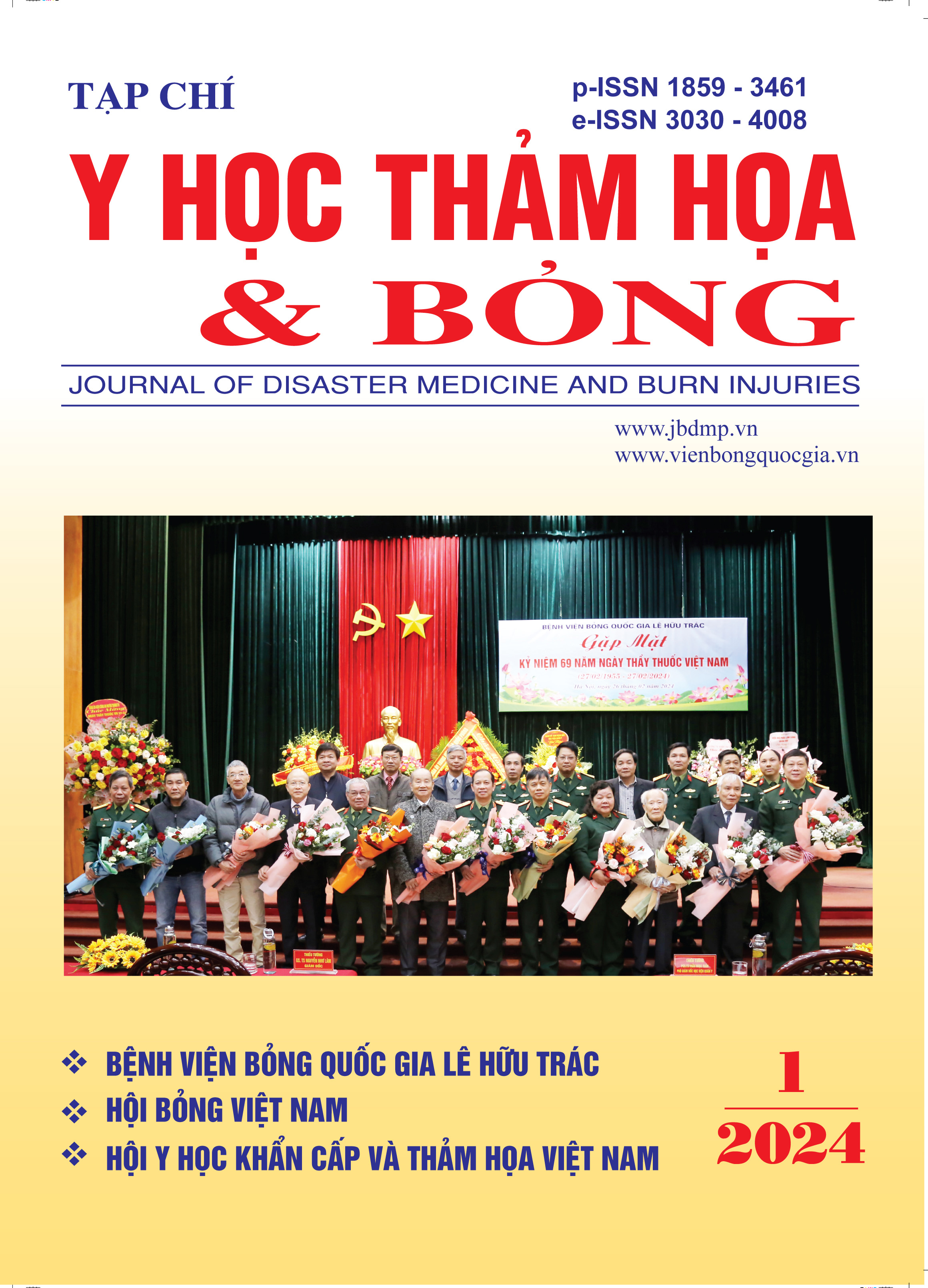The situation of collecting and treatment of patient’s burn from 2021 to 2022 at the Department of Burn, Nghe An General Friendship Hospital
Main Article Content
Abstract
AIMS: Comment on some epidemiological and outcome characteristics of burned patients from 2021 to 2022 at the Department of Burn, Nghe An General Friendship Hospital.
Materials and methods: Retrospective, statistical, and descriptive research based on 575 medical records of burned patients from January 1, 2021, to December 31, 2022, at the Department of Burn, Nghe An General Friendship Hospital.
Results: The mean age is 37.38 ± 33.54 years; max 89 years, min 03 months. The proportion of males/females is approximately 2/1. Agents mainly of burn are fire and boiling water (38.78%; 31.83%). There are 6 patients with chemical burns. There are 163 cases of electric burns and electric spark burns (28.35%). The average burn area: 15.37 ± 8.32%, max 45%. Patients with general and deep burns < 10% mainly 58.43% and 32.52%. There 11.65% of burn patients with associated pathology and patients with epilepsy accounted for the highest rate with 11 cases (1.91%). A large number of hospitalized patients were treated without surgery (55.48%). Surgery 256 patients (44.52%). 16 cases of amputation (2.78%). The main cause of amputation is high-voltage electrical burns (75%). Patients recovered and discharged 92.87%; 02 patients died (0.35%); 39 patients were referred (6.78%). Patients hospitalized for more than 15 days: 39.13%; the average day of treatment was 13.42 ± 16.51.
Conclusion: The rate of electrical burns is quite high (28.35%), leaving severe sequelae (amputation). It is necessary to propagate more widely in the mass media, measures to prevent burn accidents and provide first aid after burns.
Article Details
Keywords
Epidemiological characteristics, outcome, burn
References
www.who.int/healthinfo/global_burden_disease/GBD_report_2004update_full.pdf (Accessed on April 02, 2010).
2. James SL, Lucchesi LR, Bisignano C, et al. Epidemiology of injuries from fire, heat and hot substances: global, regional and national morbidity and mortality estimates from the Global Burden of Disease 2017 study. Inj Prev 2020; 26:i36.
3. Garmel G. M. and Mahadevan S. V. (2012) An introduction to clinical emergency medicine, Cambridge University Press.
4. Trần Đoàn Đạo (2015). Tình hình điều trị bỏng và di chứng bỏng tại Bệnh viện Chợ Rẫy trong 3 năm 2012 - 2014. Tạp Y học thảm họa và Bỏng. 2 (2015), 25-29.
5. Hồ Thị Xuân Hương, Nguyễn Băng Tâm (2011). Bỏng điện ở trẻ em tại viện bỏng quốc gia 5 năm (2006 - 2010). Tạp chí y học Thảm họa và Bỏng. 1 (2011): 9-16.
6. Đặng Hoàng Nga, Nguyễn Hải Yến, Nguyễn Thị Hạnh (2015). Tình hình thu dung và điều trị bỏng tại Bệnh viện Đa khoa Trung ương Thái Nguyên. Tạp chí y học Thảm họa và Bỏng. 2 (2015).
7. Li H., Yao Z., Tan J.. et al (2017) Epidemiology and outcome analysis of 6325 burn patients: a five-year retrospective study in a major burn center in Southwest China. Scientific reports.7: 46066.


